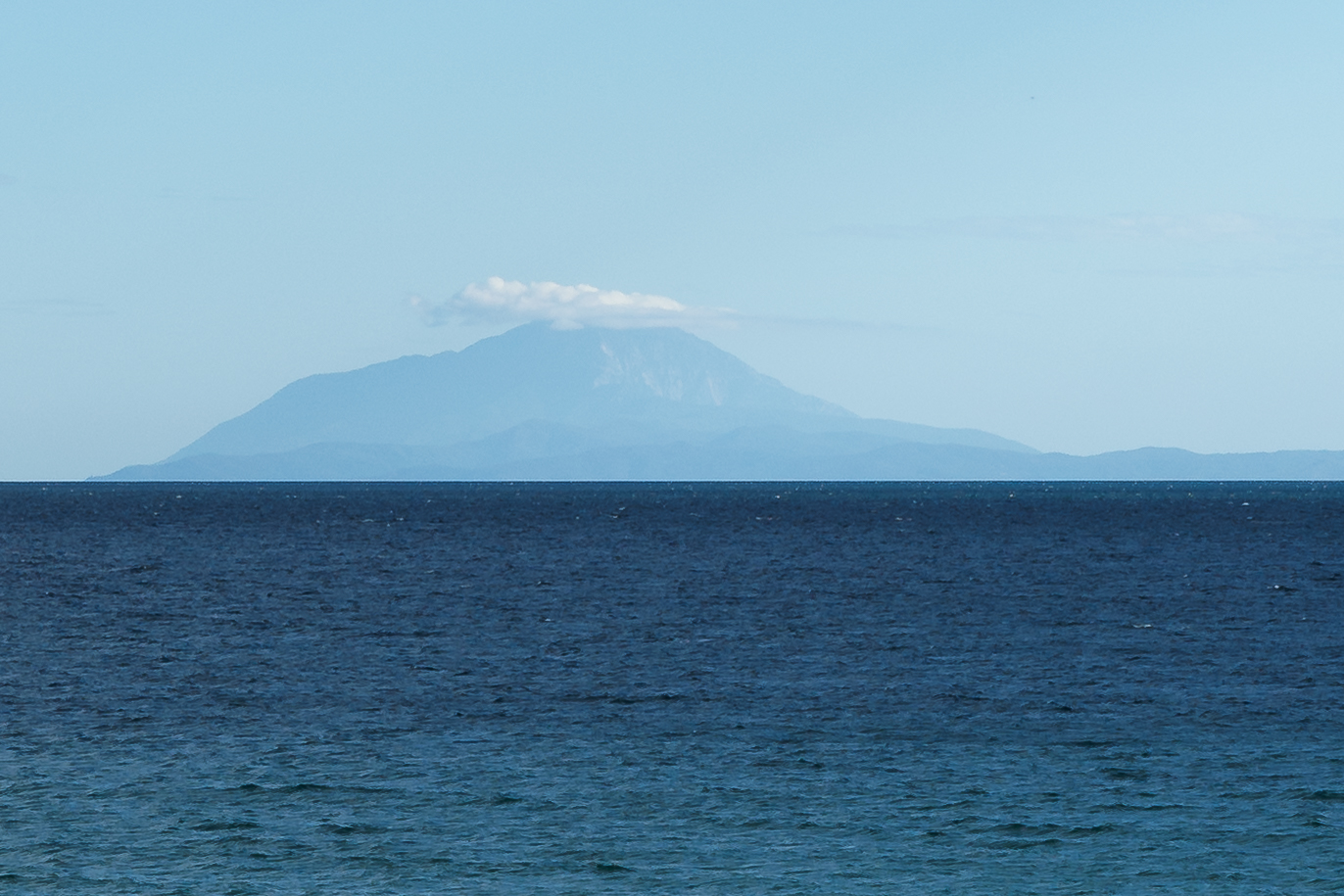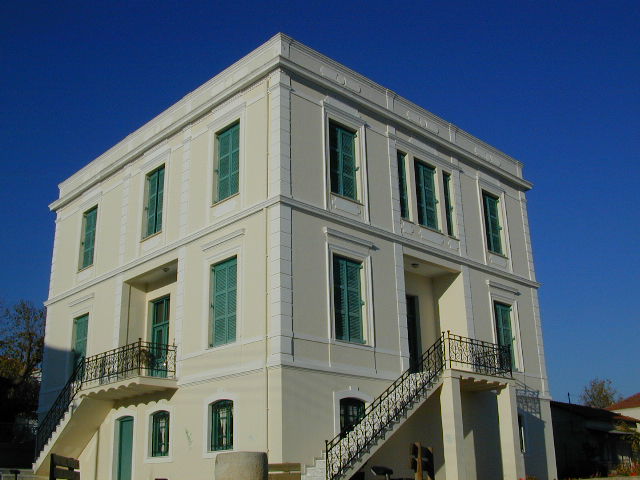|
Votanikos
Votanikos ( el, Βοτανικός, ) is a neighborhood located 3 km west of the downtown part of the Greek capital of Athens. The area is named after a nearby botanical garden situated to the southwest ( Athens Botanical Gardens). The eastern part are residential, the western part are forested and industrialized. The subdivision has no squares but has a nearby school. Major streets bordering this subdivision includes Patsi Street to the west, Athinon Avenue to the north, Konstantinopouleos Avenue and the rail to the south and Petrou Ralli Avenue to the south. The Iera Odos runs in the middle. The population is around 5,000–6,000 people and the area is about 0.5 km². Athens's first mosque will be in Votanikos district. Neighboring quarters *Akadimia Platonos, north * Profitis Daniil, northeast * Asyrmatos, south *Kato Petralona, south History The area saw housing developments in the early part of the 20th century when Athens' began to grow as well as an indust ... [...More Info...] [...Related Items...] OR: [Wikipedia] [Google] [Baidu] |
Votanikos Mosque
The Votanikos Mosque ( el, Τζαμί του Βοτανικού) or Athens Mosque ( el, Τζαμί της Αθήνας, Tzami tis Athinas, Athens Mosque) is a mosque in the Votanikos neighbourhood of Athens, Athens, Greece. It is the first official mosque in the Greek capital since the Greek War of Independence. Athens was the only European capital without a mosque until its construction. The project faced opposition from the Greek Orthodox Church and civil protests. History There are mosques from Ottoman Greece, Ottoman times in Athens, such as the Tzistarakis Mosque and the Fethiye Mosque (Athens), Fethiye Mosque, but they function solely as archaeological monuments. Until 2014, only Orthodox Christianity, Judaism, and Islam in some areas of Greece were legally allowed to open places of worship. While there was no official mosque near Athens, more than a hundred makeshift mosques formed in the area. As of November 2020, ten have been given permission by the Greek government ... [...More Info...] [...Related Items...] OR: [Wikipedia] [Google] [Baidu] |
Akadimia Platonos
Akadimia Platonos ( ) literally meaning Plato's Academy, is a neighbourhood located west-northwest of the downtown part of the Greek capital of Athens. History The area is named after Plato's Academy, which he founded in the area in 387 BC and which continued to operate until it was destroyed by the Roman dictator Sulla in 86 BC. University of Chicago Press. p. 70. . Excavations of Ancient artefacts began in 1929 and continue to the present day, under the auspices of the third General Directorate of Antiquities. The area saw housing developments in the early part of the 20th century when Athens began to grow. An industrial zone was also laid out during this time. The area was mostly urbanised during the period after [...More Info...] [...Related Items...] OR: [Wikipedia] [Google] [Baidu] |
Athens
Athens ( ; el, Αθήνα, Athína ; grc, Ἀθῆναι, Athênai (pl.) ) is both the capital city, capital and List of cities and towns in Greece, largest city of Greece. With a population close to four million, it is also the seventh List of urban areas in the European Union, largest city in the European Union. Athens dominates and is the capital of the Attica (region), Attica region and is one of the List of oldest continuously inhabited cities, world's oldest cities, with its recorded history spanning over 3,400 years and its earliest human presence beginning somewhere between the 11th and 7th millennia BC. Classical Athens was a powerful Greek city-state, city-state. It was a centre for the arts, learning and philosophy, and the home of Plato's Platonic Academy, Academy and Aristotle's Lyceum (classical), Lyceum. It is widely referred to as the cradle of civilization, cradle of Western culture, Western civilization and the democracy#History, birthplace of democracy, larg ... [...More Info...] [...Related Items...] OR: [Wikipedia] [Google] [Baidu] |
Athens Botanical Gardens
Athens ( ; el, Αθήνα, Athína ; grc, Ἀθῆναι, Athênai (pl.) ) is both the capital and largest city of Greece. With a population close to four million, it is also the seventh largest city in the European Union. Athens dominates and is the capital of the Attica region and is one of the world's oldest cities, with its recorded history spanning over 3,400 years and its earliest human presence beginning somewhere between the 11th and 7th millennia BC. Classical Athens was a powerful city-state. It was a centre for the arts, learning and philosophy, and the home of Plato's Academy and Aristotle's Lyceum. It is widely referred to as the cradle of Western civilization and the birthplace of democracy, largely because of its cultural and political influence on the European continent—particularly Ancient Rome. In modern times, Athens is a large cosmopolitan metropolis and central to economic, financial, industrial, maritime, political and cultural life in Greece. In ... [...More Info...] [...Related Items...] OR: [Wikipedia] [Google] [Baidu] |
Greece
Greece,, or , romanized: ', officially the Hellenic Republic, is a country in Southeast Europe. It is situated on the southern tip of the Balkans, and is located at the crossroads of Europe, Asia, and Africa. Greece shares land borders with Albania to the northwest, North Macedonia and Bulgaria to the north, and Turkey to the northeast. The Aegean Sea lies to the east of the mainland, the Ionian Sea to the west, and the Sea of Crete and the Mediterranean Sea to the south. Greece has the longest coastline on the Mediterranean Basin, featuring thousands of islands. The country consists of nine traditional geographic regions, and has a population of approximately 10.4 million. Athens is the nation's capital and largest city, followed by Thessaloniki and Patras. Greece is considered the cradle of Western civilization, being the birthplace of democracy, Western philosophy, Western literature, historiography, political science, major scientific and mathematical p ... [...More Info...] [...Related Items...] OR: [Wikipedia] [Google] [Baidu] |
Northern Greece
Northern Greece ( el, Βόρεια Ελλάδα, Voreia Ellada) is used to refer to the northern parts of Greece, and can have various definitions. Administrative regions of Greece Administrative term The term "Northern Greece" is widely used to refer mainly to the two northern regions of Macedonia and (Western) Thrace; thus the Thessaloniki-based Ministry of Macedonia and Thrace was known as "Ministry for Northern Greece" (Υπουργείο Βορείου Ελλάδος), and previously as the Governorate-General of Northern Greece (Γενική Διοίκηση Βορείου Ελλάδος), until 1988. Broader term and NUTS usage The term ''Lower Greece'' was mentioned in 16th century western correspondence when the region was under Ottoman rule, it included Northern Epirus and Western Macedonia. The term Northern Greece may also, according to context, incorporate the region Epirus. When Epirus is included, it is broadly coterminous with the "New Lands" (Νέες Χ ... [...More Info...] [...Related Items...] OR: [Wikipedia] [Google] [Baidu] |
Pelagonia
Pelagonia ( mk, Пелагонија, Pelagonija; el, Πελαγονíα, Pelagonía) is a geographical region of Macedonia named after the ancient kingdom. Ancient Pelagonia roughly corresponded to the present-day municipalities of Bitola, Prilep, Mogila, Novaci, Kruševo, and Krivogaštani in North Macedonia and to the municipalities of Florina, Amyntaio and Prespes in Greece. History In antiquity, Pelagonia was roughly bounded by Paeonia to the north and east, Lynkestis and Almopia to the south and Illyria to the west; and was inhabited by the Pelagones, an ancient Greek tribe of Upper Macedonia, who were centered at the Pelagonian plain and belonged to the Molossian tribal state or '' koinon''. The region was annexed to the Macedonian kingdom during the 4th century BC and became one of its administrative provinces. In medieval times, when the names of Lynkestis and Orestis had become obsolete, Pelagonia acquired a broader meaning. This is why the Battle of Pelago ... [...More Info...] [...Related Items...] OR: [Wikipedia] [Google] [Baidu] |
Mount Athos
Mount Athos (; el, Ἄθως, ) is a mountain in the distal part of the eponymous Athos peninsula and site of an important centre of Eastern Orthodox monasticism in northeastern Greece. The mountain along with the respective part of the peninsula have been governed as the monastic community of Mount Athos, an autonomous region within the Hellenic Republic, ecclesiastically under the direct jurisdiction of the Ecumenical Patriarch of Constantinople, while the remainder of the peninsula forms part of the Aristotelis municipality. Mount Athos has been inhabited since ancient times and is known for its long Christian presence and historical monastic traditions, which date back to at least AD 800 and the Byzantine era. Because of its long history of religious importance, the well-preserved agrarian architecture within the monasteries, and the preservation of the flora and fauna around the mountain, Mount Athos was inscribed on the UNESCO World Heritage List in 1988. In modern ... [...More Info...] [...Related Items...] OR: [Wikipedia] [Google] [Baidu] |
Doxato
Doxato ( el, Δοξάτο, formerly Δοξάτον) is a town and municipality in the Drama regional unit, in East Macedonia and Thrace, Greece. The seat of the municipality is the town Kalampaki. Municipality The municipality Doxato was formed at the 2011 local government reform by the merger of the following 2 former municipalities, that became municipal units: *Doxato * Kalampaki The municipality has an area of 243.400 km2, the municipal unit 162.336 km2. The former municipality of Doxato was founded as a result of law 2539/1997 ("Plan Kapodistria"), by merging the former municipalities of Doxato and Megalou Alexandrou, and the former communities of Agios Athanasios and Kefalarion. According to the 2011 census, the former municipality had a population of 8,943 and the town 2,884. History (Doxato Massacres) According to the statistics of Vasil Kanchov ("Macedonia, Ethnography and Statistics"), 900 Greek Christians, 850 Turks, 200 Gypsies, 120 Bulgarian Christians ... [...More Info...] [...Related Items...] OR: [Wikipedia] [Google] [Baidu] |
Haemus Mons
In earlier times, the Balkan Mountains were known as the Haemus Mons ( ). It is believed that the name is derived from a Thracian word ''*saimon'', 'mountain ridge', which is unattested but conjectured as the original Thracian form of Greek ''Emos''. Another classic etymology derives the name 'Haemos' from the myth about the fight of Zeus and the dragon Typhon: :"He was again driven to Thrace and hurled entire mountains at Zeus in the battle around Mount Haemus. When these bounced back upon him under the force of the thunderbolt, blood gushed out on the mountain. From this, they say, the mountain is called ''Haemus'' ("bloody")." In antiquity, the mountain range and the area around it was populated by free Thracian peoples such as the Bessi, Dii, and Satrae. Herodotus records that an oracle-shrine of Dionysus (originally a Thracian god whose cult became widespread among the ancient Greeks) was located atop one of its mountains. John Milton's '' Sylvarum Liber'' (''Naturam non ... [...More Info...] [...Related Items...] OR: [Wikipedia] [Google] [Baidu] |
Chalkidiki
Chalkidiki (; el, Χαλκιδική , also spelled Halkidiki, is a peninsula and regional unit of Greece, part of the region of Central Macedonia, in the geographic region of Macedonia in Northern Greece. The autonomous Mount Athos region constitutes the easternmost part of the peninsula, but not of the regional unit. The capital of Chalkidiki is the town of Polygyros, located in the centre of the peninsula, while the largest town is Nea Moudania. Chalkidiki is a popular summer tourist destination. Name ''Chalkidiki'' also spelled ''Halkidiki'' () or ''Chalcidice'' () was the name given to this peninsula after Chalkida. In ancient times, the area was a colony () of the ancient Ionian Greek city-state of Chalcis. Geography The Cholomontas mountains lie in the north-central part of Chalkidiki. Chalkidiki consists of a large peninsula in the northwestern Aegean Sea, resembling a hand with three 'fingers' (though in Greek these peninsulas are often referred to as 'legs'). ... [...More Info...] [...Related Items...] OR: [Wikipedia] [Google] [Baidu] |





